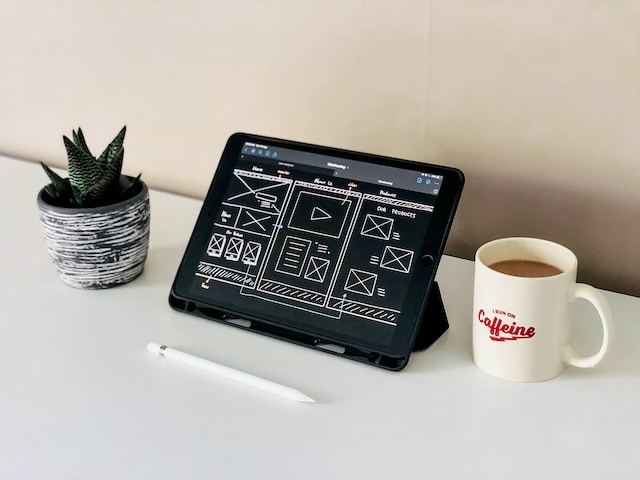Nowadays, most businesses interact with clients through their websites. Although this makes businesses easier to find, it is much easier to stand out. You have very little time to make a proper introduction and make website visitors feel welcome. Of course, creating a compelling website will help, but you will also need to impress visitors and potential clients with your personality and experience. Rather than providing the engaging and personal experience visitors seek, many businesses fall short, presenting lackluster biographies that fail to resonate. However, you have the power to break this pattern.
Your “About Me” page presents a prime opportunity to showcase your unique qualities, captivate visitors, and establish meaningful connections. This article will explain how to make the best “About Me” page that distinguishes you from the competition, guiding you toward creating a captivating narrative that leaves a lasting impression.
Understanding Your Audience
When it comes to your website visitors, it’s crucial to understand who you’re speaking to. Take a moment to identify your target audience. Are they potential clients, fellow professionals, or enthusiasts in your field? Research their needs, desires, and pain points to tailor your content accordingly. What makes an excellent website will depend on who you ask. Therefore, knowing how to cater to your audience’s interests would be a good idea. Find out how they express themselves online and use the appropriate tone on your introductory page. Remember, an engaging “About Me” page speaks directly to your audience’s hearts.
Why Businesses Lose Clients
Losing clients can be a real blow to any business. There are various reasons why clients leave, but one significant factor lies in their online presence. Websites play a crucial role in shaping a business’s online presence, acting as a virtual storefront that potential clients visit to evaluate its credibility and offerings. A poorly designed or outdated website can quickly deter prospects, leading them to seek solutions elsewhere.
Additionally, the “About Me” page, often overlooked, holds immense importance in establishing a personal connection with potential clients. If this page fails to captivate visitors or lacks authenticity, it can hinder trust-building efforts and result in lost business opportunities. Businesses must recognize the significance of these digital touchpoints and invest in creating compelling websites and engaging “About Me” pages to retain clients and attract new ones in today’s digital age.

Crafting a Compelling Story on Your “About Me” Page
This part of your website is perfect for telling your story and revealing the unique journey that led you to where you are today. Share the experiences that shaped you, the challenges you’ve overcome, and the moments that ignited your passion. Don’t be frightened to share stories of personal triumph and your company’s ups and downs. Those details will make you sound empathetic and approachable. However, you should also avoid coming off as goofy or unreliable. Infuse your personality, sprinkle it with anecdotes, and create a narrative that resonates with your readers. Let your story be a magnet that draws them in, leaving them eager to learn more.
Showcasing Your Expertise
Now it’s time to shine a spotlight on your expertise. Dedicated introduction pages are where you demonstrate your knowledge and establish yourself as an authority in your field. Showcase your qualifications, certifications, and noteworthy achievements. Incorporate testimonials from satisfied clients or colleagues to add social proof. Let your readers know that they’re in capable hands.

Engaging Visuals and Multimedia
A picture is worth a thousand words, they say, and this also holds true for your “About Me” page. Choose high-quality images that capture your personality and align with your brand. Include videos that offer a glimpse into your world or showcase your work if possible. Implement color schemes that make your website easy to use for the visually impaired. Infographics and visual elements can enhance engagement and make your page visually appealing. However, you should also remember that sometimes less is more. Don’t overcrowd your page since that will make the important elements more difficult to recognize. Leave enough space to give the essential features room to breathe.
Creating a User-Friendly Layout
No one likes to get lost in a maze of information, so design your page with a user-friendly layout. Opt for a clean and organized structure, making navigating easy for visitors. Link the page to other relevant pages on your website. For example, if you include social proof, offer visitors a link to more testimonials and reviews. Use headings and subheadings to guide them through your content smoothly. And remember, in this mobile age, ensure that your page is fully responsive across different devices.
Writing Compelling Content
Get ready to weave some magic with your words! Start by crafting an attention-grabbing headline and an opening statement that piques curiosity. Then, delve into your unique value proposition. What makes you special? How can you help your readers? Engage them with storytelling techniques, injecting passion and excitement into every sentence. Remember, it’s not just about what you say but how you say it.
Adding Call-to-Action
Don’t leave your visitors hanging! Guide them to the next step with a well-placed call to action. Encourage them to engage with you further, whether through subscribing to your newsletter, contacting you for a consultation, or following you on social media. Make it easy for them to take action and keep the conversation going.

Optimizing for SEO
While your introduction page is all about connecting with humans, optimizing it for search engines is also important. Conduct keyword research to understand what your audience is searching for. Incorporate relevant keywords in meta tags, URLs, and headings throughout your content. But remember, don’t overdo it. Balance is key.
Proofreading and Editing
Before you hit that publish button, take a moment to proofread and edit your new website page. Check for grammatical errors, typos, and clarity. Ensure your language is clear and concise, leaving no room for confusion. Don’t be afraid to seek feedback from others. Fresh eyes can catch things you might have missed.
Testing and Analyzing Performance
Once your page is live, it’s time to track its performance. Dive into your website analytics to analyze visitor engagement, bounce rates, and other relevant metrics. Use this data to iterate and improve your page continually. Remember, your “About Me” page should evolve as you do.
In Conclusion
To make the best “About Me” page, you’ll need creativity, authenticity, and a deep understanding of your audience. Use this opportunity to forge connections, showcase your expertise, and leave a lasting impression. Embrace your unique story, infuse it with compelling visuals, and write in a tone that resonates with your readers. Let your website be the starting point for meaningful connections and exciting possibilities.